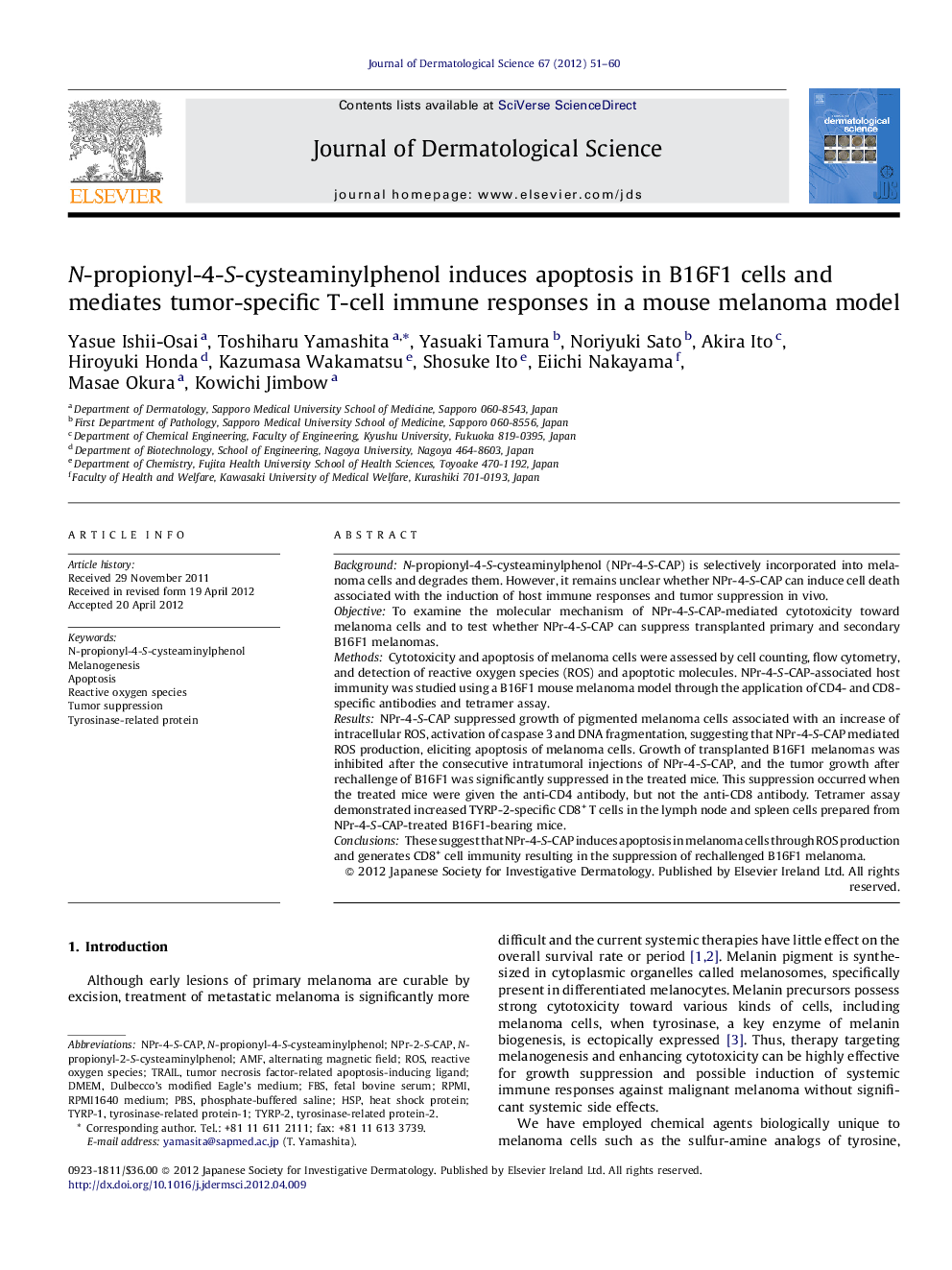| Article ID | Journal | Published Year | Pages | File Type |
|---|---|---|---|---|
| 3213089 | Journal of Dermatological Science | 2012 | 10 Pages |
BackgroundN-propionyl-4-S-cysteaminylphenol (NPr-4-S-CAP) is selectively incorporated into melanoma cells and degrades them. However, it remains unclear whether NPr-4-S-CAP can induce cell death associated with the induction of host immune responses and tumor suppression in vivo.ObjectiveTo examine the molecular mechanism of NPr-4-S-CAP-mediated cytotoxicity toward melanoma cells and to test whether NPr-4-S-CAP can suppress transplanted primary and secondary B16F1 melanomas.MethodsCytotoxicity and apoptosis of melanoma cells were assessed by cell counting, flow cytometry, and detection of reactive oxygen species (ROS) and apoptotic molecules. NPr-4-S-CAP-associated host immunity was studied using a B16F1 mouse melanoma model through the application of CD4- and CD8-specific antibodies and tetramer assay.ResultsNPr-4-S-CAP suppressed growth of pigmented melanoma cells associated with an increase of intracellular ROS, activation of caspase 3 and DNA fragmentation, suggesting that NPr-4-S-CAP mediated ROS production, eliciting apoptosis of melanoma cells. Growth of transplanted B16F1 melanomas was inhibited after the consecutive intratumoral injections of NPr-4-S-CAP, and the tumor growth after rechallenge of B16F1 was significantly suppressed in the treated mice. This suppression occurred when the treated mice were given the anti-CD4 antibody, but not the anti-CD8 antibody. Tetramer assay demonstrated increased TYRP-2-specific CD8+ T cells in the lymph node and spleen cells prepared from NPr-4-S-CAP-treated B16F1-bearing mice.ConclusionsThese suggest that NPr-4-S-CAP induces apoptosis in melanoma cells through ROS production and generates CD8+ cell immunity resulting in the suppression of rechallenged B16F1 melanoma.
